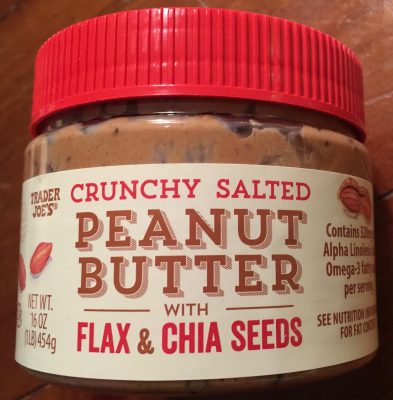#178 How to Find Out the Age of Your Arteries in 1 Minute
August 13th, 2016 by Dr. John DayPodcast: Play in new window | Download
Subscribe: RSS
How to Find Out the Age of Your Arteries in 1 Minute
You are only as old as your arteries. In this article, I will show you how to find out the age of your arteries in just one minute.
As long as your arteries stay young, your heart, brain, kidneys, and other organs should continue to function normally. Read on to find out if your arteries are older than you are and what you can do to reverse artery aging now.
A Simple Test to Find Out the Age of Your Arteries
The easiest and quickest way to find out the age of your arteries is to determine your “pulse pressure.” This can easily be done at home with a blood pressure machine.
First, take your blood pressure after you have been comfortably resting for five minutes. The blood pressure cuff on your arm should fit well and be at about the same height as your heart.
The pulse pressure is calculated by subtracting the lower number of your blood pressure (diastolic blood pressure) from the upper number (systolic blood pressure). For example, if your blood pressure is 120/80 mmHg, then your pulse pressure would be 40 (120 minus 80).
What does pulse pressure mean?
The pulse pressure is a gauge to the age of your arteries. As people age, arteries tend to stiffen and fill up with plaque.
People with stiff, or old arteries, tend to have a high systolic blood pressure (top number). In contrast, the diastolic blood pressure (bottom number) doesn’t change much with age.
What is a normal pulse pressure?
A normal pulse pressure for adults is somewhere around 40. The closer your pulse pressure is to 40, the better.
If the pulse pressure is more than 10 points above or below 40, this could be a warning sign. For example, a very low pulse pressure could mean heart failure, a tight aortic valve (aortic stenosis), or other problems.
On the other hand, a high pulse pressure is usually caused by stiff or old arteries. Other causes of a high pulse pressure could include a leaky aortic valve (aortic regurgitation), too much thyroid hormone (hyperthyroidism), anemia, or other causes.
How serious is a high pulse pressure?
A high pulse pressure is something that shouldn’t be ignored. For example, in a study of 7,929 people, researchers found that if your pulse pressure was even 10 points higher than it should be, then your risk of dying prematurely was 20% higher.
Another study showed that if your pulse pressure is more than 20 points above normal (60 or higher), that your risk of atrial fibrillation is increased by 316%!
When it comes to your brain, studies show that a high pulse pressure is associated with early dementia. Likewise, studies also show that a high pulse pressure is linked to kidney failure and dialysis.
What causes a high pulse pressure?
The top four causes of a high pulse pressure that I typically see are due to smoking, diabetes, obesity, or advancing age. While their isn’t much you can do about the number of candles on your birthday cake, there is a lot you can do now to reverse the biologic age of your arteries.
8 Ways to Normalize Your Pulse Pressure
The following tips to normalize your pulse pressure are based on the assumption that your high pulse pressure is due to premature aging of your arteries. Below are the eight best ways to lower pulse pressure based on the latest medical studies.
1. High Intensity Exercise: 14 Point Reduction
The best way to lower your pulse pressure is with exercise. Whether it is interval training or plain old “cardio,” it all helps.
Indeed, one study showed that pulse pressure was lowered by 14 points with just one hour of high intensity exercise three days a week. While this study was definitely on the high end of what you can expect to see, most other studies show a three to six point reduction in pulse pressure with traditional exercise.
2. Yoga: 10 Point Reduction
If high intensity exercise is not your thing, another study showed that yoga was highly effective as well. In this study, researchers compared yoga to brisk walking in 60 people with a pulse pressure above 60. Those people randomized to an hour of yoga everyday, saw their pulse pressure go down by 10 points.
3. Folic Acid: 4.7 Point Reduction
Folic acid has been shown to drop pulse pressure by 4.7 points in a medical study. However, before you turn to folic acid supplements, other studies have shown that folic acid supplements are associated with colon cancer.
A much better and safer way to get all the folate your body needs is to lower your pulse pressure through healthy eating. For example, just one cup of lentils will get you 90% of the folate you need for the day. A cup of asparagus or cooked spinach will also get you 67% and 66% of your daily folate needs respectively.
I have found that most people who regularly eat legumes and vegetables can easily get three or more times the recommended daily amount of folate their body needs. Supplements really should just be reserved for people who can’t get enough folate naturally.
4. Potassium: 2.9 Point Reduction
In a carefully designed study, potassium supplementation was shown to decrease pulse pressure by 2.9 points. This study can’t be replicated at home unless it is under a doctor’s supervision. This is because you can only buy extremely low dose potassium supplements in the U.S.
The reason why potassium supplements only come is exceedingly low doses is because of the risk of death if you take too much. Too much potassium from supplements could cause a cardiac arrest.
In contrast, as long as your kidneys are working properly, your body will only keep the potassium it needs from natural food sources. A high potassium diet has long been known to lower pulse pressure.
To ensure enough potassium in your diet to keep your pulse pressure low, make sure that vegetables, legumes, and fruit cover most of your plate at mealtime. Vegetables, legumes, and fruit are packed with potassium and the other nutrients your body needs.
5. Healthy Diet: 2.5 Point Reduction
A healthy diet, which was defined in this study as lots of fruits and vegetables with minimal animal fats, caused a 2.5 point drop in pulse pressure. While 2.5 might not seem like much, this is much better than what many blood pressure medications can do.
6. Say No to Processed and Fast Foods: 2 Point Reduction
Nearly 80% of the salt in the Standard American Diet (SAD) comes from processed and fast foods. Studies show that cutting back on sodium by replacing processed and fast foods with real food can lower pulse pressure by more than two points.
7. Blood Pressure Medications: 1.4 to 6.7 point drop
If lifestyle changes fail to normalize your pulse pressure, then medications may be needed. It is important to remember that not every blood pressure lowering medication has the same effect to pulse pressure.
For example, one study showed that clonidine and hydrochlorothiazide (HCTZ) dropped pulse pressure by more than six points. In contrast, beta blockers and calcium channel blockers only lowered pulse pressure by a little more than one point.
8. Dark Chocolate: 0.5 Point Reduction
While a 0.5 point reduction in pulse pressure really isn’t that much, at least you can indulge in some dark chocolate and know that your arteries are getting younger. In this high quality study, dark chocolate lowered systolic blood pressure by 4.4 mmHg and diastolic blood pressure by 3.9 mmHg, for a pulse pressure lowering of 0.5 (4.4 minus 3.9), in just one month. Unfortunately, if you are eating anything under 70% cocoa, it is mostly sugar.
Take Home Message
Your pulse pressure is an often overlooked gauge to the age of your arteries. In just one minute you can quickly find out if you have old or young arteries.
If your pulse pressure is high, please work under the direction of your physician to start bringing it down now. The simple lifestyle changes discussed in this article will likely normalize your pulse pressure in just a few months.
Now is the time to turn back the clock on your arteries.
Is your pulse pressure high? What are you doing to keep it in the normal range?
Please leave your comments and questions below. If you haven’t signed up yet, here are the links to my free weekly newsletter and podcast.


